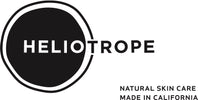Did you know that cave paintings dating back as far as 21,000 years depicted honeycombs?
Bees have always been important to our ecology AND it so happens that their products are great for humans.
Honey is not just nourishing and soothing, but it is also naturally antibacterial — meaning it acts as a preservative. They even found honey in tombs in ancient Egypt and it wasn’t spoiled!
When you include honey as an ingredient in a product, fewer preservatives need to be added.
Beeswax (and its cousin, propolis) is great for skin and nails. Both soften the skin and add a great all-natural scent to formulas without additional fragrance. We’ll touch more on the benefits to honey and beeswax in a bit, but first let’s give a little time to the star of today’s show - the bee.
“Bees are responsible for pollinating about one-sixth of the flowering plant species worldwide and approximately 400 different agricultural types of plant.” (onegreenplanet.org) Pretty impressive, right? On top of that, they produce honey!

Honey
How is it even possible that a swarm of insects make this product?
Here’s how: Bees leave the hive and forage for nectar (a dilute sucrose solution). The bees ingest the nectar, and an enzyme in their honey stomach cleaves sucrose into glucose and fructose. When they return to the hive they dehydrate the nectar by drying it with their wings. They also swallow and regurgitate the nectar over and over again, reducing moisture and adding enzymes to the honey. The bees consume the honey all winter long, they eat the honey and use that sugar for energy - they shiver to keep the queen warm!
In terms of harvesting honey, for centuries, humans have selected bees that produce more honey than they need. You can remove a good amount of honey and leave enough for the bees to survive the winter.
The honey is extracted, and can be filtered or pasteurized. It does not require processing to consume. However, infants one year or younger should never be given honey because it could become toxic in their under formed intestinal tract, causing illness or even death. (Web MD)
Because it is hostile to the growth of microbes, honey is used for all kinds of things like wound dressings and anti-inflammatory medications. It has been used medicinally for over 5,000 years.
“The healing property of honey is due to the fact that it offers antibacterial activity, maintains a moist wound condition, and its high viscosity helps to provide a protective barrier to prevent infection. Its immunomodulatory property is relevant to wound repair too.” (NCBI)
Other healing benefits of honey include: decreasing the severity and duration of diarrhea, preventing acid reflux, relieving cold and cough symptoms, treating sleep disturbances, and more. Check out a more complete list here.
Beeswax
Beeswax is formed by wax-producing glands in the abdominal segments of worker bees. It is then discarded in the hive.
“As medicine, beeswax is taken by mouth for lowering cholesterol and for relieving pain. It is also used for swelling (inflammation), ulcers, diarrhea, and hiccups.” (Web MD)
Beeswax has been used topically on the skin since ancient Egyptian times. It can be helpful with itching and diaper rash, among other skin ailments. It can be used for everything from candles to moustache wax and lip balm.



Leave a comment